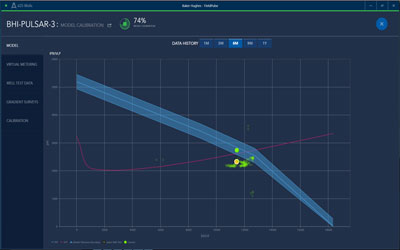Baker Hughes announced the commercial release of its FieldPulse™ model-based, predictive analytics software, which enables operators to proactively optimize production across entire fields by giving them clear understanding of an asset’s performance in real time.
“When operators can predict and mitigate problems that jeopardize production, they can manage their assets to meet their maximum potential and deliver the highest return on investment,” said Martin Brudy, Vice President, Reservoir Development Services at Baker Hughes. “The FieldPulse software gives operators that capability, helping them to understand in real time how a field is performing, identify and target wells with the highest production potential and manage the asset accordingly.”
In order to provide this understanding, the FieldPulse software can seamlessly integrate and interpret large volumes of production data, well models and well test data from multiple sources; then, automating common petroleum engineering calculations, it helps identify and rank underperforming wells. Key performance indicators such as rate decline and model deviations are constantly monitored, and warnings and alerts are generated to accelerate well selection and provide actionable data to help operators make decisions relating to well remediation, when and where it is needed.
Because the FieldPulse software uses data from existing production and completion databases, operators can choose to avoid investing in new sensors, gauges or databases. The software also has its own built-in nodal engine, which allows real-time integration between field data and well models without the need for additional well modeling software.
The FieldPulse software can be used in real-time operations centers, in modern collaboration rooms, on tablet devices, on touch-enabled laptops and on conventional laptops and desktops. It works out of the box with minimal configuration and is easily deployed so value can be realized within hours.
The FieldPulse model-based, predictive analytics software is the latest example of Baker Hughes’ strategy to improve well efficiency, optimize production and increase ultimate recovery.
Image Source: Chevron

